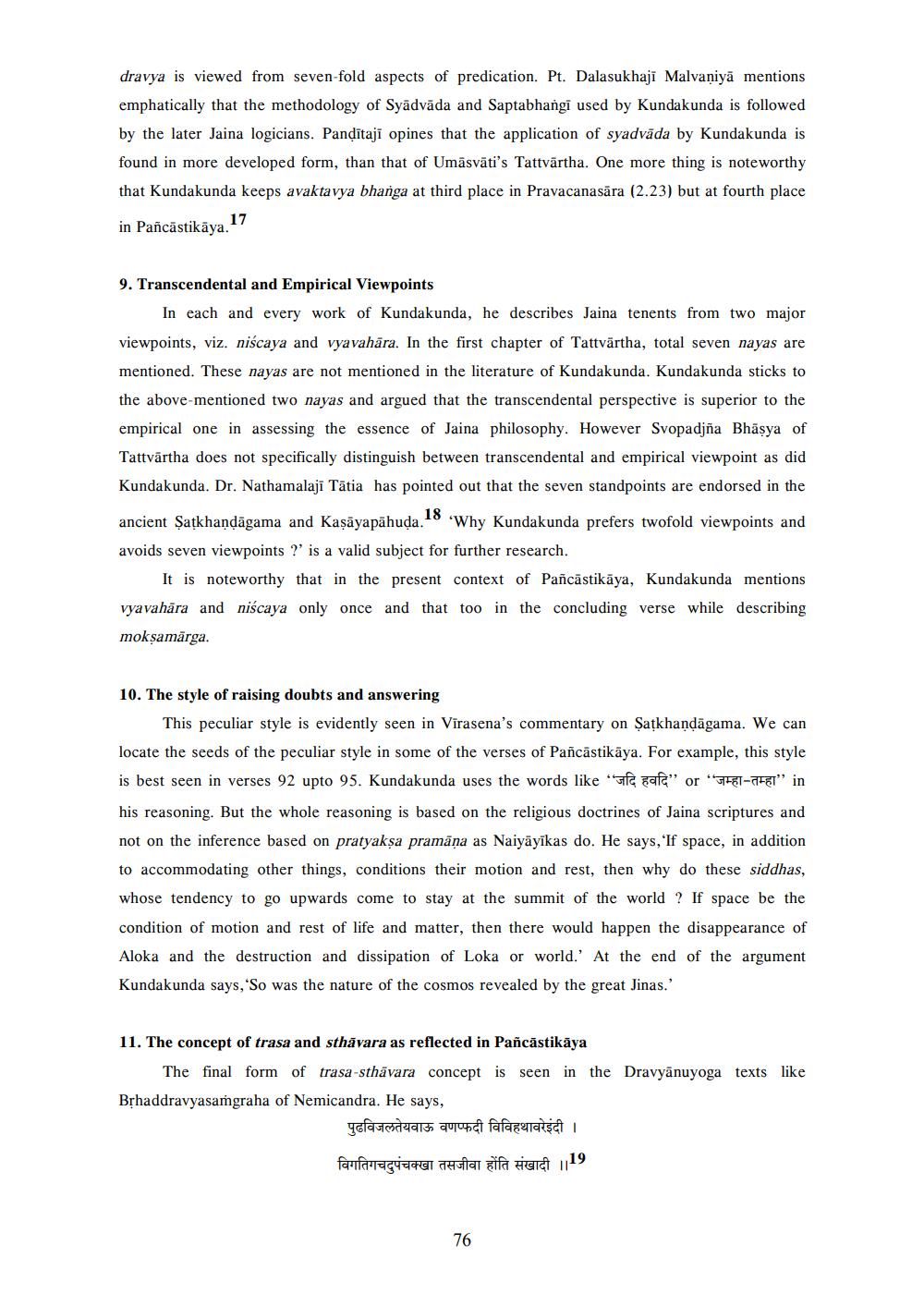________________
dravya is viewed from seven-fold aspects of predication. Pt. Dalasukhaji Malvaniyā mentions emphatically that the methodology of Syādvāda and Saptabhangī used by Kundakunda is followed by the later Jaina logicians. Pandītaji opines that the application of syadvāda by Kundakunda is found in more developed form, than that of Umāsvāti's Tattvārtha. One more thing is noteworthy that Kundakunda keeps avakta vya bhanga at third place in Pravacanasāra (2.23) but at fourth place
in Pañcāstikāya. 17
9. Transcendental and Empirical Viewpoints
In each and every work of Kundakunda, he describes Jaina tenents from two major viewpoints, viz. niscaya and vyavahāra. In the first chapter of Tattvārtha, total seven nayas are mentioned. These nayas are not mentioned in the literature of Kundakunda. Kundakunda sticks to the above-mentioned two nayas and argued that the transcendental perspective is superior to the empirical one in assessing the essence of Jaina philosophy. However Svopadjña Bhāsya of Tattvārtha does not specifically distinguish between transcendental and empirical viewpoint as did Kundakunda. Dr. Nathamalaji Tātia has pointed out that the seven standpoints are endorsed in the
ancient Satkhandāgama and Kaşāyapāhuda." 'Why Kundakunda prefers twofold viewpoints and avoids seven viewpoints ?' is a valid subject for further research.
It is noteworthy that in the present context of Pancāstikāya, Kundakunda mentions vyavahāra and niscaya only once and that too in the concluding verse while describing moksamärga.
10. The style of raising doubts and answering
This peculiar style is evidently seen in Vīrasena's commentary on Satkhandāgama. We can locate the seeds of the peculiar style in some of the verses of Pancāstikāya. For example, this style is best seen in verses 92 upto 95. Kundakunda uses the words like fa gafa" or " ET-A-EI" in his reasoning. But the whole reasoning is based on the religious doctrines of Jaina scriptures and not on the inference based on pratyaksa pramāna as Naiyāyikas do. He says, 'If space, in addition to accommodating other things, conditions their motion and rest, then why do these siddhas, whose tendency to go upwards come to stay at the summit of the world ? If space be the condition of motion and rest of life and matter, then there would happen the disappearance of Aloka and the destruction and dissipation of Loka or world. At the end of the argument Kundakunda says, 'So was the nature of the cosmos revealed by the great Jinas.'
11. The concept of trasa and sthāvara as reflected in Pancastikāya
The final form of trasa-sthāvara concept is seen in the Dravyānuyoga texts like Brhaddravyasamgraha of Nemicandra. He says,
पुढविजलतेयवाऊ वणप्फदी विविहथावरेइंदी ।
विगतिगचदुपंचक्खा तसजीवा होति संखादी ।।19




